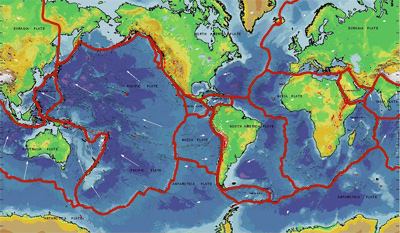Click on image for full size
Credit: John Goodge / University of Minnesota-Duluth
Newly-Found Rock May Prove Antarctica and North America Were Connected
News story originally written on July 17, 2008
There are lots of rocks in Antarctica, but the one that scientists just found is special. It may provide evidence that part of Antarctica was connected to North America hundreds of millions of years ago.
The rock, made of granite - a common intrusive igneous rock, was found on a glacier in Antarctica by a team of scientists who are trying to figure out how the continents were connected into a large supercontinent named Rodinia hundreds of millions of years ago.
This rock supports the hypothesis that about 600-800 million years ago part of the supercontinent broke away from what is now the southwestern United States and drifted south to become eastern Antarctica and Australia. This idea is called the southwestern United States and East Antarctica (SWEAT) hypothesis.
The rock was taken to laboratories for testing to see if its chemistry was like that of rocks in the US. They found that the rock is very similar to igneous rocks in the United States. Particularly, it is similar to rocks that are found in parts of California, New Mexico, Kansas, and Illinois, as well as New Brunswick and Newfoundland in Canada. The rocks in this area were part of the supercontinent Rodinia.
Figuring out where continents where hundreds of millions of years ago is a bit like putting a jigsaw puzzle together. The pieces are the continents we have today, but they have been moved from where they used to be because of plate tectonics. By finding rocks on different continents that are made of the same minerals and chemicals, scientists can piece together where the continents used to be located and how they were connected.
The supercontinent of Rodinia was around when multi-cellular life first developed on Earth over 500 millions years ago. That time is called the Cambrian Explosion because there was a huge increase in the number of species that lived on Earth. It’s possible that the moving, colliding continents and erosion of rocks from the supercontinent Rodinia helped trigger the evolution of life. These changes in the rocks altered the chemistry of seawater, which may have provided the nutrients that the newly-evolved life forms needed.















